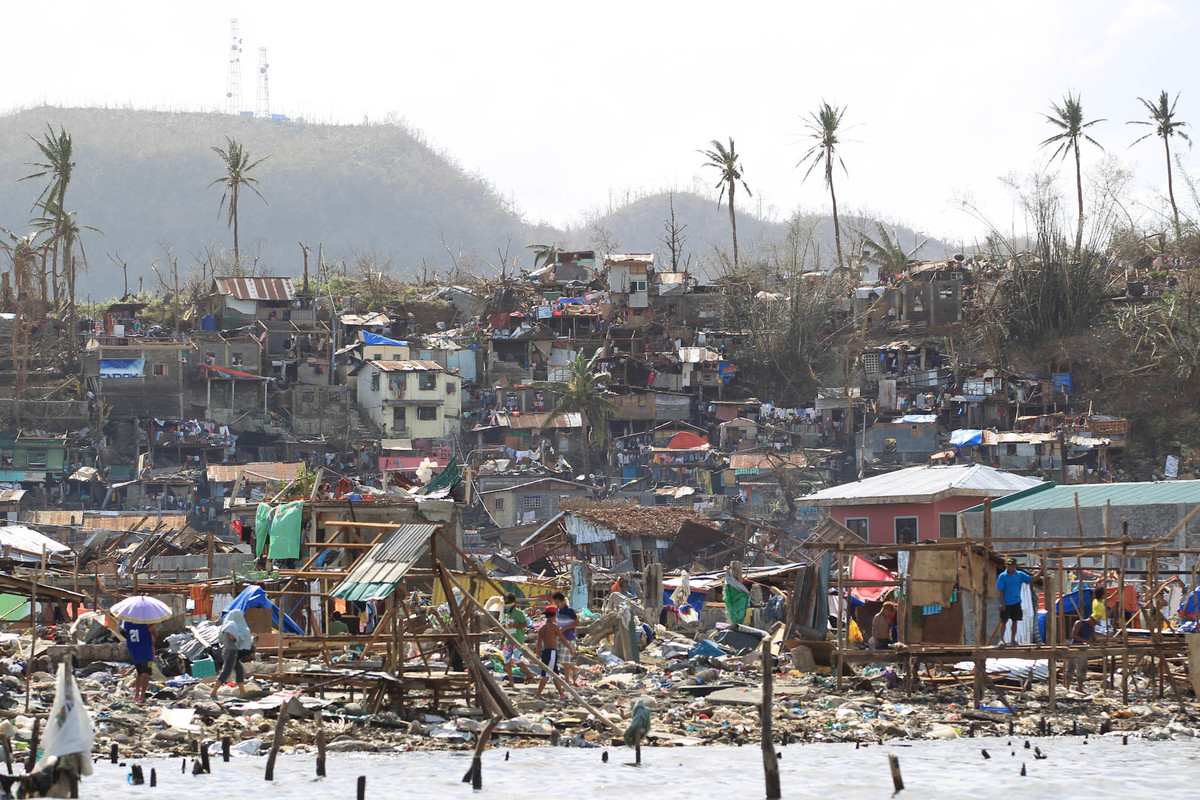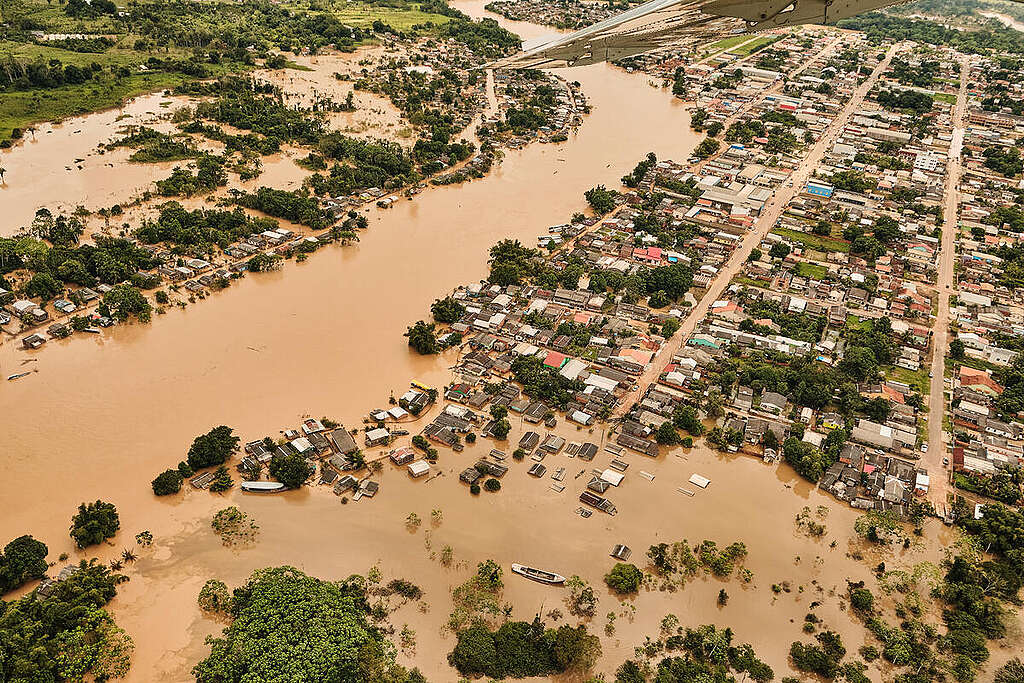I grew up on Catanduanes, an island on the eastern part of the Philippines best known for being frequented by typhoons. This is a story borne from enduring a life of disaster.
Then: I am 10 years old and the typhoon is named Reming. Classes are suspended. Nothing unusual — we’re called the “land of the howling winds” for a reason. My sister and I watch as my parents board up our windows with wood planks. Our doors are closed. We get the candles to prepare for lights out. The winds start to pick up. The rain is pouring. Outside, it’s all white. Suddenly, my Mom shouts that one of our doors is slowly opening due to the wind. My Dad pushes our heavy dining table to keep it closed. The wind persists and all four of us end up pushing the table to make sure the door doesn’t open.
Now: I am 28 years old and I am alone in the same house I grew up in. The typhoon is named Kristine. I go to bed thinking that the typhoon is already coming to an end. Kristine isn’t supposed to make a landfall on our island anyway. I make plans to walk my dog in the morning. I fall asleep at 8 PM, and wake up at 11 PM to howling winds. I check all the doors and put up all the typhoon guards that I could. Over the years, we’ve reinforced our house as much as we could to make it typhoon proof: concrete roofs, concrete walls, elevated floors. But still, I feel like the wind could just seep through the cracks and blow me away. I push the dining table onto the door, just like my Dad did 18 years ago.
 An aerial photo shows flooded Triangulo in Naga City.
Several towns are still submerged in water brought by Severe Tropical storm Kristine (international name: Trami) in Camarines Sur. © Noel Celis / Greenpeace
An aerial photo shows flooded Triangulo in Naga City.
Several towns are still submerged in water brought by Severe Tropical storm Kristine (international name: Trami) in Camarines Sur. © Noel Celis / GreenpeaceThere have been many typhoons that traumatized me and my country and we remember their names like they are people who wronged us: Loleng, Rosing, Reming, Ondoy, Yolanda, Rolly. The list goes on. We are a country known for resilience, known for rising up from disasters with smiles on our faces. We have been ravaged by winds and floods, have had our houses torn apart and our livelihoods destroyed. But the very resilience that allows us to push through disaster is a double edged sword that nowadays does more harm than good. How many more typhoons do we have to endure? How many floods? How many deaths?
 Damaged areas along the coast in Tacloban City after Typhoon Haiyan hit the area. Typhoon Haiyan, which hit the Philippines on November 8, 2013 can be seen as an indication of things to come in the future if steps are not taken to prevent climate change by reducing greenhouse gas emissions, with tropical cyclones likely to become more intense and more damaging. © Matimtiman / Greenpeace
Damaged areas along the coast in Tacloban City after Typhoon Haiyan hit the area. Typhoon Haiyan, which hit the Philippines on November 8, 2013 can be seen as an indication of things to come in the future if steps are not taken to prevent climate change by reducing greenhouse gas emissions, with tropical cyclones likely to become more intense and more damaging. © Matimtiman / GreenpeaceIn the midst of Kristine dumping two months worth of rain overnight, I scrolled through social media and read hundreds of posts from people asking to be rescued from their homes. I saw friends posting about their houses being submerged in water. Farmers crying over their ruined fields. Old people being carried out of their homes and onto boats. Rescue teams unable to reach some places. In the darkness, I am filled with an overwhelming guilt because I am safe and dry while so many others are fighting to stay alive. But what else can I do but wait?
When you grow up on an island frequented by typhoons, you learn to anticipate the movement of the wind. When you’re in the eye of the storm, it is silent. When it’s the tail, the wind will show its force and whip through everything on its path. It gets worse before it gets better. Kristine’s worst came in the form of a long dark night of flash floods that killed hundreds and displaced thousands across multiple provinces.
This flood sank not just homes, but also the very Filipino resilience that used to keep our hopes up. We are tired of this cycle of typhoons and floods and needing to be rescued. We are frustrated at the government for its lack of urgency. We are angry that our forests have been cut down and our mountains mined for the sake of profit. But most of all, we are afraid of what is to come.
I first learned about climate change during a summer camp when I was still in elementary school. There, we watched Al Gore’s The Inconvenient Truth, were taught about Reduce, Reuse, Recycle, made art about the environment, and were told that pollution is bad. It’s the small things that matter, they said. We can all just start walking instead of riding cars and we may just fix climate change, they said. Such foolishness.
When you are wading through waist-deep floods, wondering if you will live through the night while a typhoon huffs and puffs through your country, you will understand that it is not a small change that will save you. We can change the way we build our homes or the way we separate our garbage, but if there are no actual policies and laws that protect us, we are sitting ducks for what is to come. And what is coming is even worse than what we could imagine.
So here’s to those in power: to the world leaders who make laws, to the oil companies who destroy the planet for profit, and to the billionaires whose money could be put to better use, this is your time to act for good of the many. This is your time to act on the climate. This is your time to save the future.

It’s time to make the polluters pay. Sign now to hold the oil and gas corporations accountable, and support a safe and fair future for all.
Add your name
 2 hours ago
14
2 hours ago
14

